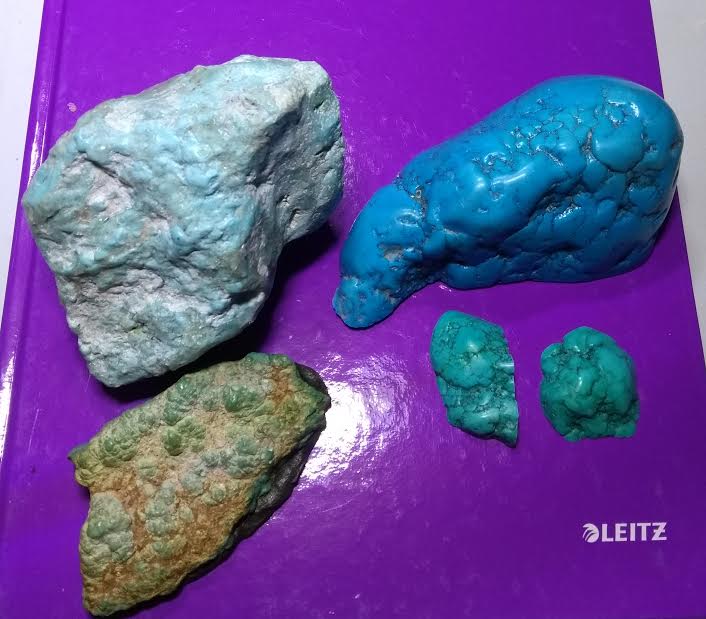Thanks, there are some definitive tests but they go way beyond a persons capabilities at home like the Raman spectroscopic exam. It has to do with the mixture of copper and aluminum content of the stone. These are absent in magnesite which is a magnesium carbonate mineral.
The element manganese, Causes many minerals to glow under florescent UV light therefore mangnesite and howlite glow under UV light. Elements like copper and iron dampen UV reflection therefore the copper in turquoise keeps it from glowing like other minerals. I can’t speak to way the stabilizing or dying process would affect the florescence.
The use of hydrochloric acid can help determine the difference between howlite and magnesite but it seems to have a similar affect on turquoise so no help there.
For me the best way to learn what is good turquoise is to buy what you know is the real thing and live with it. Carry it. Look at it often. Feel it and heft it. become intimate with its texture and feel. By knowing the real thing all others become suspicious material.
When buying rough turquoise it might be good to know the goal for the seller is to retain as much of the original rock ( because he is selling by weight) as possible and still make it attractive to the buyer. therefore it would appear very rough or may just have a polished corner so you see the gem quality. Other than that you would not find much tumbled turquoise larger than a bead for a necklace centerpiece. What’s the point of tumbling off stone weight. Many imitations will be sold with a very smooth and nodular appearance. That is clue #1 for me. Here is a photo. Magnesite on the right. Turquoise that is stabilized on the left. some turquoise has a bubbled surface but as you can see it is way different.
Hardness tests and weight can be tricky. Turquoise can be chalky and soft to the fingernail as well as gem hard and heavy. The soft or unstable turquoise is normally impregnated with resin to make it harder and workable. This will add tons of weight to the stone. So water displacement, volume / weight tests don’t work. The same goes for magnesite if it is stabilized. The light blue stone on the left I stabilized because it was somewhat chalky. It doubled in weight after the process. Hope this helps Kyle
P.S. I really don’t mind answering questions but I do get a little long winded 
